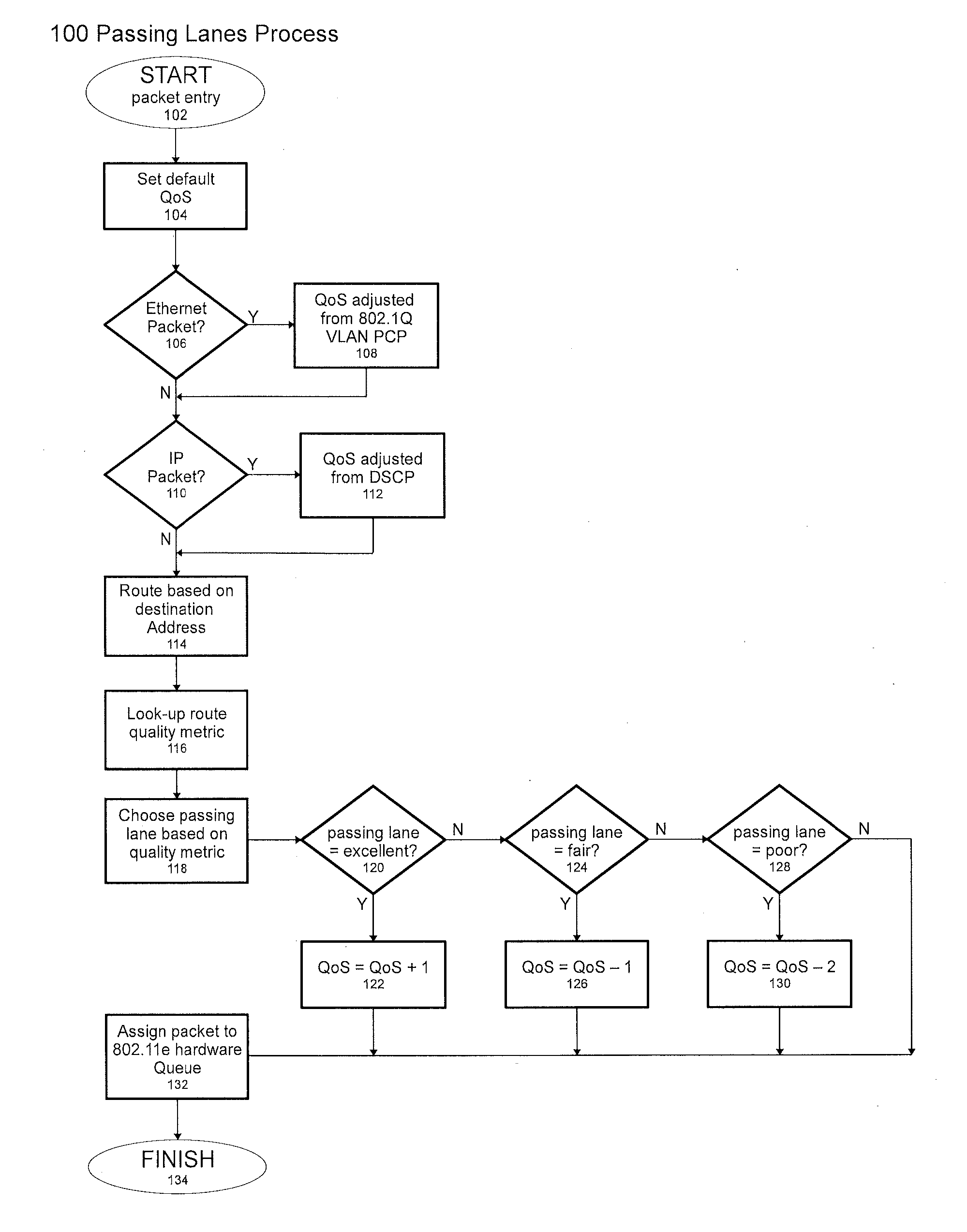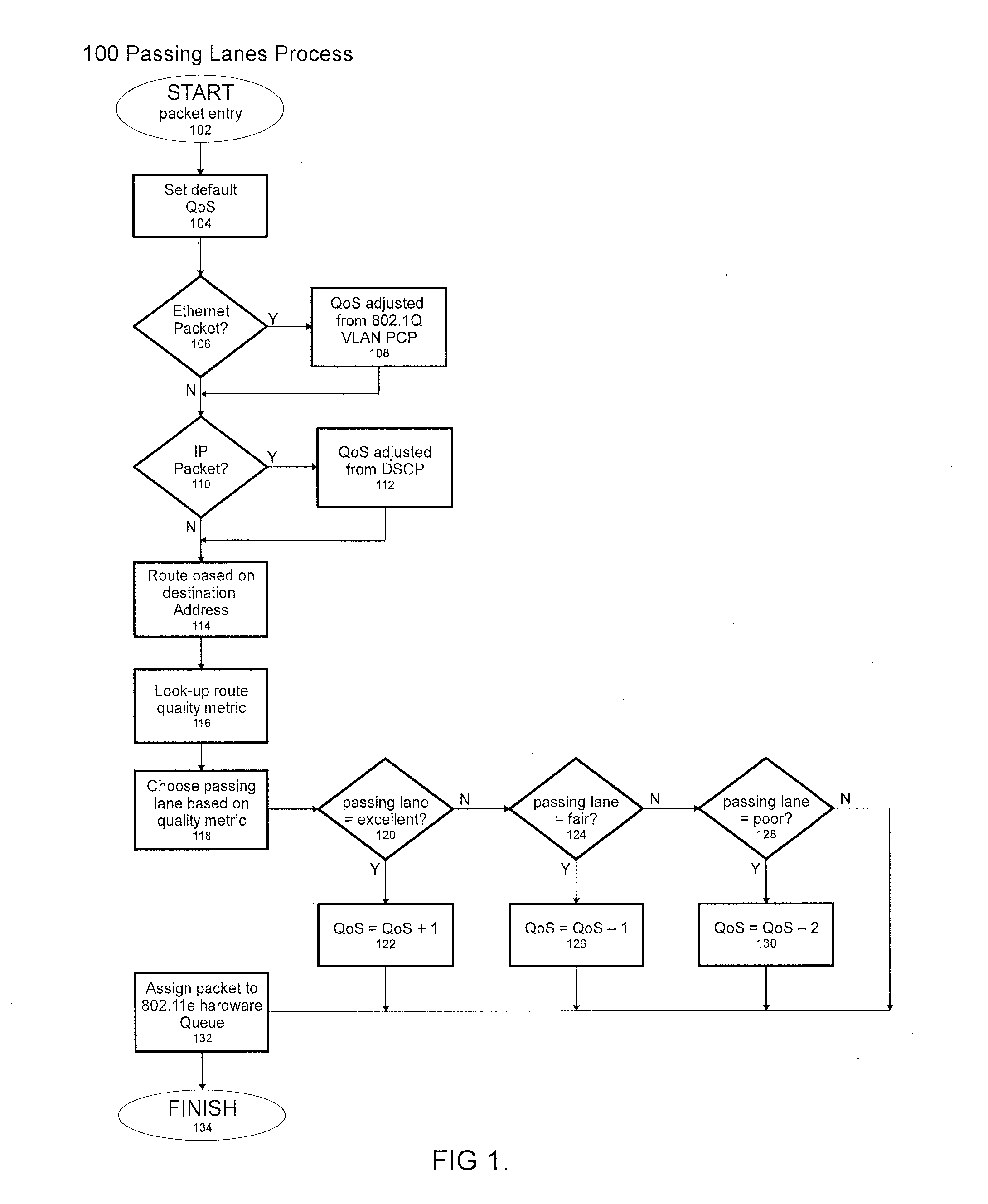System and method for quality-based optimization of network traffic
a network traffic and optimization system technology, applied in the field of quality-based optimization of network traffic, can solve the problems of multiple packet delivery retries, inability to meet the needs of users, so as to improve network efficiencies, improve communication quality, and improve the effect of network quality
- Summary
- Abstract
- Description
- Claims
- Application Information
AI Technical Summary
Benefits of technology
Problems solved by technology
Method used
Image
Examples
Embodiment Construction
[0012]A preferred embodiment of the invention will be set forth in detail with reference to the drawings.
[0013]In general terms, the preferred embodiment, called Passing Lanes Protocol, is designed to set or modify Quality of Service (QoS) parameters in a network, based on a metric that determines the quality of the link to a packet's destination. The invention ideally works with multiple hardware queues in each network interface device, in order to optimize each packet's priority, based on both original packet priorities and link quality. In the ideal situation, the source device would have a dedicated transmit queue at the hardware and software layer for each peer.
[0014]The 802.11 protocol is one example of a protocol with which the preferred embodiment can be used. 802.11 wireless access points must be able to communicate with wireless clients that are in various locations and can be subject to various inefficiencies in diverse circumstances. The varied locations and diverse circ...
PUM
 Login to View More
Login to View More Abstract
Description
Claims
Application Information
 Login to View More
Login to View More - R&D
- Intellectual Property
- Life Sciences
- Materials
- Tech Scout
- Unparalleled Data Quality
- Higher Quality Content
- 60% Fewer Hallucinations
Browse by: Latest US Patents, China's latest patents, Technical Efficacy Thesaurus, Application Domain, Technology Topic, Popular Technical Reports.
© 2025 PatSnap. All rights reserved.Legal|Privacy policy|Modern Slavery Act Transparency Statement|Sitemap|About US| Contact US: help@patsnap.com



